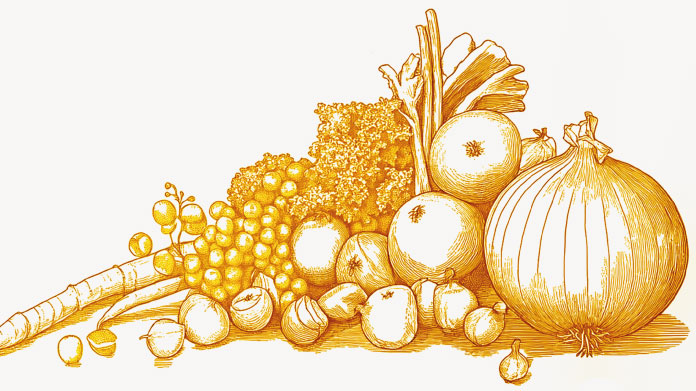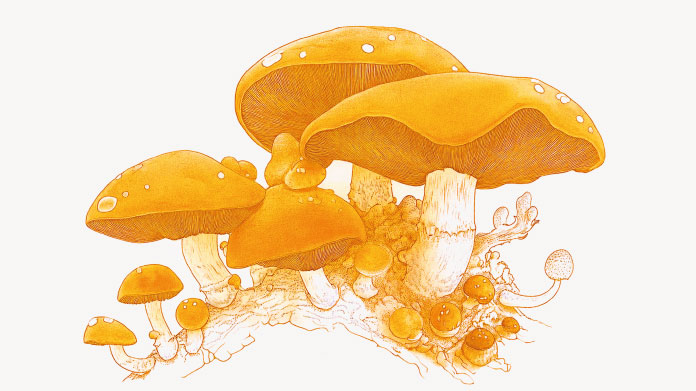Candida albicans, friend or foe?
So what exactly is this fungus? What risks does it present? How can we prevent infection? What can we do to get rid of it? Read on for a summary of everything you need to know about Candida albicans.

What exactly is Candida albicans?
Candida albicans is a yeast-type fungus which is part of the Candida genus. Of the 200 species in this genus, Candida albicans is the best-known strain. Naturally present in the body, this strain is primarily found in the digestive and genital mucosa. It may also be present in the skin, though this is less common. It is a commensal fungus which means it is non-pathogenic. Some studies suggest it may even play a beneficial role in the body. However, it can equally ‘turn against us’ and become pathogenic. As it grows, it can lead to fungal infections – commonly referred to as the development of candidiasis.
When is Candida albicans considered a danger to health?
Though it may remain innocuous, Candida albicans can also multiply in the body and threaten our health. Certain conditions are particularly conducive to the development of an infection, such as changes in the body’s pH, hydration levels and nutrient concentrations. Candidiasis may also be caused by changes in the gut microbiota – the collective name for the thousands of microorganisms with very different effects that exist in the gut. A number of studies have shown that an imbalance in our gut microbiota may be responsible for health problems and diseases.
Who is at risk of candidiasis?
Candida albicans is present in most people. If conditions in the body become favourable, it can grow and lead to candidiasis. While anyone can be affected, some people are at particular risk of developing a fungal infection from Candida albicans They include those with a vulnerable immune system, such as new-born babies, the elderly, those taking broad-spectrum antibiotics and immune-suppressed individuals. The latter includes patients on chemotherapy, people with AIDS and those who have undergone an organ transplant.
What are the symptoms of aCandida albicans infection?
Whitish patches in the mouth, skin redness and itching, inflammation in the genital area … these are all symptoms that may indicate the presence of candidiasis. This fungal infection can develop on the skin or in many other parts of the body such as the mouth, esophagus, intestines or vagina. Symptoms can vary greatly, depending on the area affected.
What are the different forms of candidiasis?
As you’re probably aware, candidiasis can develop in various ways. Usually, it remains very localised. It may start in the skin, in which case the infection tends to occur in sweaty areas such as the armpits, or in skin that is grazed or burned. Candidiasis may also occur in mucosa such as those of the esophagus, stomach, colon, oral cavity or genital tract. Vulvo-vaginal candidiasis is a common form of fungal infection; indeed it is one of the most frequently-suffered gynaecological infections. Usually occurring during pregnancy or after the menopause, its symptoms are itching and a severe burning sensation in the vulva.
Is there a risk of complications from Candida albicans?
In most cases, superficial candidiasis presents no risk to health. Nonetheless, it can become serious if it infiltrates the circulation. This is referred to as systemic candidiasis or candidaemia. In such instances, several areas of the body become infected. The patient develops a fever and is generally unwell. These symptoms are difficult to diagnose which can delay and complicate control of the condition. A worrying increase in candidiasis cases has been observed in recent years. Two reasons have been suggested for this: a primary infection and hospital-acquired contamination.
How can you prevent infection by Candida albicans?
While a healthy diet and good personal hygiene are key to preventing candidiasis, other solutions may also prove beneficial. Probiotics are microorganisms that help reduce some of the conditions conducive to the development of Candida albicans. Probiotics of the strain Saccharomyces boulardii, for example, help to prevent imbalances in gut microbiota.
What should you do if you develop candidiasis?
Topical and oral anti-fungal treatments have been developed to fight the infections caused by Candida albicans. These treatments often use synthetic molecules, but natural and effective active principles are also available to treat candidiasis. One such product, available without a prescription, is caprylic acid which has effective anti-fungal properties. This compound is naturally present in breast milk as well as in vegetable oils such as coconut oil. Other dietary supplements can also help eliminate candidiasis such as oregano oil which offers broad-spectrum anti-infection activity.
How can you prevent recurrent infections?
Once you have had candidiasis, it is quite likely to recur which is why, as previously mentioned, it is advisable to prevent the growth of Candida albicans. You can also help protect your body from candidiasis by taking advantage of the immune-stimulant effects of shiitake mushroom or of lactoferrin, a glycoprotein with anti-microbial activity.
Keywords
4 Days
Great customer service - responsive …
I ordered from them and my item was unavailable for sometime. I was super happy when they reactivated my order and shipped my item which arrived very quickly. Great customer service.
Ruth Rueter
5 Days
Super fast shipping
Super fast shipping
Donald Borling
8 Days
Reputable companysearch and the number of…
The research and the number of selection of products.
NAKHJAVAN Shervin
21 Days
The Anti Aromatase is a great product
The Anti Aromatase is a great product. You just need to have constant inventory. Recently this product has been out of stock.
GEORGE Verne
22 Days
Great help on chat
Great help on chat. Knowledgeable and friendly.
Jason Argos
26 Days
Customer service was fast and friendly.
Customer service helped to stop the transaction process of the subscription. I appreciated that.
Greenie
26 Days
I order here due to the high quality of…
I order here due to the high quality of the products and the quick delivery of items - thank you
Barbara J
27 Days
SuperSmart's Eye Pressure supplements: highly recommended!
I purchase SuperSmart's Eye Pressure supplements regularly for over 5 years, and gotta say they are truly a wonderful product for my Glaucoma. Highly recommended if you have eye pain from your Glaucoma.
D. Martinez
32 Days
Quick service
Quick service
MONELL
33 Days
Speedy service.
Speedy service.
ROSENTHAL Marvin
36 Days
Clear website- Efficient
Clear website. Excellent search engine and fast delivery!
Mohamad Hussein
39 Days
They have great products.
They have great products.
Vickie
39 Days
Great Shipping Time!
You Have A Great Shipping Time! Praise The Lord!
DMHoge
41 Days
Doctor Recommended!
Good pricing, very good availability, doctor recommended (couldn't find what I needed anywhere else), and it took only a week to arrive (which I can't complain about).
Al
42 Days
Great product and fast shipping
Great product and fast shipping
Marie





